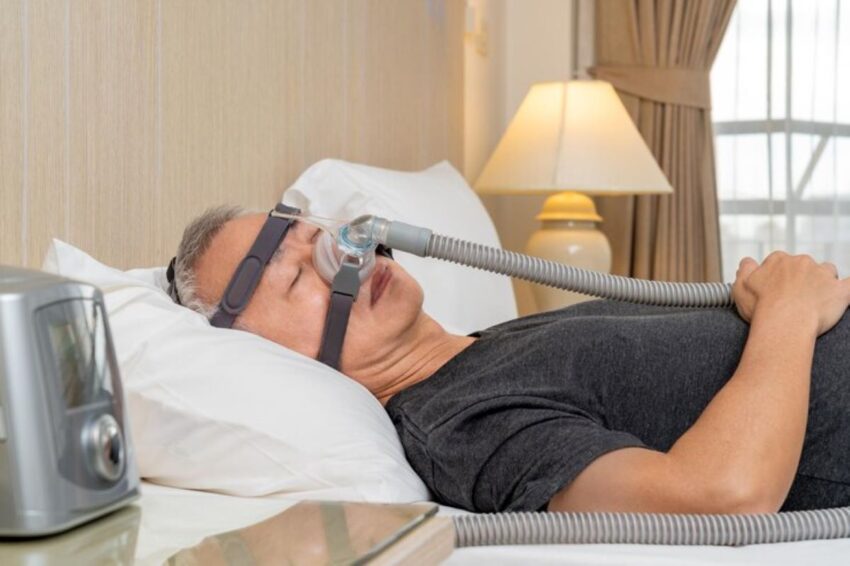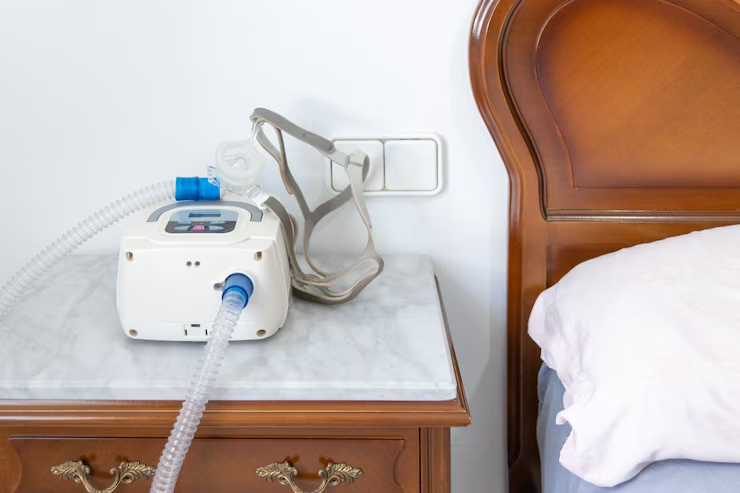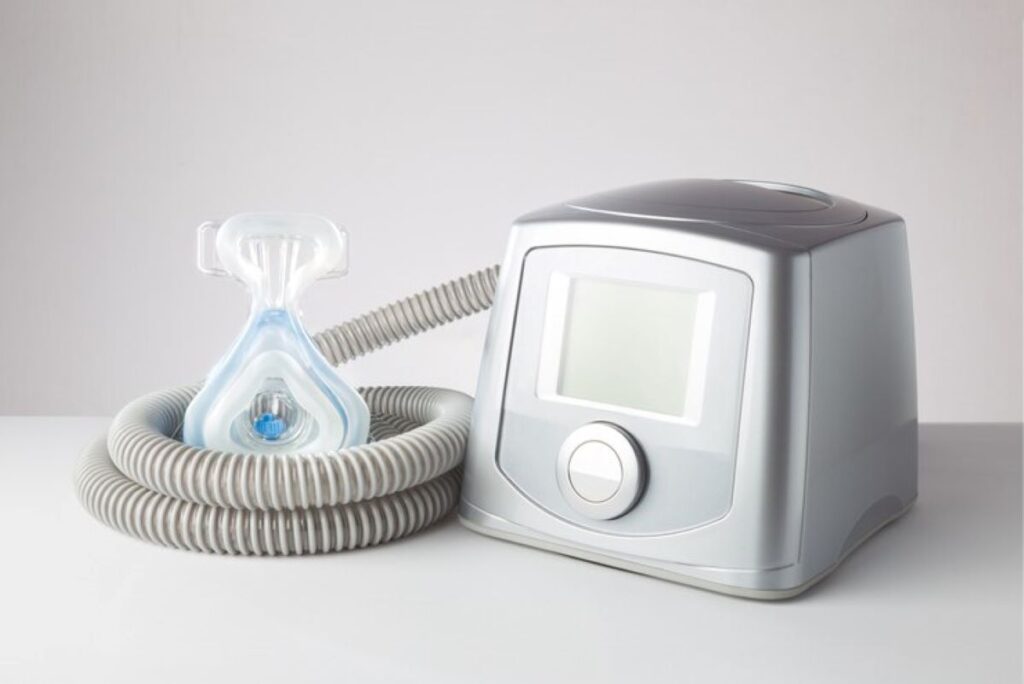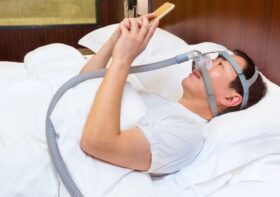CPAP Machines Australia: What to Know Before You Buy or Upgrade

CPAP machines in Australia are devices that deliver pressurised air through a mask to keep airways open during sleep. They provide essential sleep apnea treatment for thousands of Australians who experience breathing interruptions at night. These machines turn restless, broken sleep into refreshing rest by preventing the dangerous pauses in breathing that define obstructive sleep apnea.
Choosing the right CPAP device isn’t just about buying medical equipment—it’s about finding a solution that suits your lifestyle, travel habits, and long-term health needs. The Australian market has many models with different features, ranging from basic pressure delivery systems to advanced machines with built-in humidifiers, data tracking, and wireless connectivity.
This guide covers the important factors to consider for anyone looking into CPAP Machines Australia: What to Know Before You Buy or Upgrade. Whether you’re starting therapy for the first time or thinking about a CPAP upgrade, knowing how effective the treatment is, what compatibility requirements exist, what battery backup options are available, and what maintenance needs must be met will help you make an informed choice that supports regular, successful therapy.
What Are CPAP Machines and How Do They Help Treat Sleep Apnea?
CPAP machines deliver a constant stream of pressurised air through a mask worn during sleep, keeping your airways open throughout the night. This Continuous Positive Airway Pressure acts as a pneumatic splint, preventing the soft tissues in your throat from collapsing and blocking your breathing passages.
The Mechanics of CPAP Therapy
The device consists of three main components: a motor that generates pressurised air, a mask that delivers this air to your nose or mouth, and a tube connecting them. When you breathe in, the steady flow of air maintains enough pressure to prevent airway obstruction, which is the primary cause of obstructive sleep apnea (OSA). The pressure settings are calibrated specifically for your needs, typically determined through a sleep study conducted by a specialist.
Direct Benefits of Sleep Apnea Treatment
CPAP therapy addresses the immediate dangers of untreated sleep apnea by:
- Eliminating breathing interruptions that can occur dozens or even hundreds of times per night
- Maintaining consistent oxygen levels in your bloodstream throughout sleep
- Reducing snoring caused by vibrating throat tissues
- Preventing micro-awakenings that fragment your sleep cycles
Long-Term Health Improvements
Regular use of CPAP therapy produces measurable improvements in daily functioning. Users typically experience reduced daytime fatigue, improved concentration, better mood regulation, and decreased risk of cardiovascular complications associated with untreated sleep apnea. Many patients report feeling genuinely rested for the first time in years, with enhanced energy levels that positively impact work performance and personal relationships.
How Can You Determine If Your Current CPAP Machine Is Effective?
CPAP effectiveness depends on whether your machine consistently prevents airway obstructions and reduces apnoea events throughout the night. The most reliable way to assess this is by reviewing your device’s built-in usage data, which tracks metrics like mask seal quality, apnoea-hypopnoea index (AHI), and hours of use per night.
Most modern CPAP machines store detailed treatment data review information accessible through companion apps or SD cards. Your AHI score should ideally remain below 5 events per hour for effective therapy. If your current readings show higher numbers, your machine may not be providing adequate pressure, or your mask fit might need adjustment.
Evaluating Performance Through Data
Check these key indicators in your machine’s data:
- AHI score: Number of breathing interruptions per hour
- Leak rate: Excessive leaks compromise therapy effectiveness
- Usage hours: Consistent nightly use of 4+ hours indicates good compliance
- Pressure levels: Whether your machine reaches therapeutic pressures
Many Australian sleep clinics offer loaner programmes where you can trial newer CPAP models for comparison. Testing a different machine for several nights provides concrete data showing whether upgraded technology might improve your therapy outcomes.
Making Adjustments for Optimal Results
Therapy adjustment based on your usage data can significantly enhance treatment without requiring a new machine. Your sleep specialist can modify pressure settings, ramp times, or humidity levels to address specific issues revealed in your data. If adjustments fail to improve your AHI scores or comfort levels after several weeks, upgrading to a newer model with advanced auto-adjusting features might be warranted.
What Should Be Considered Regarding Compatibility and Hygiene?
Compatibility
Modern CPAP masks typically work with older machines, meaning you can upgrade your mask without replacing your entire system. Most masks use standard 22mm tubing connections, allowing flexibility when selecting new equipment. This compatibility extends across different brands, giving Australian users freedom to choose masks based on comfort rather than machine limitations.
Hygiene
Regular maintenance directly impacts treatment effectiveness and equipment longevity. Essential hygiene tasks include:
- Weekly mask cleaning with mild soap and water
- Monthly filter replacements (disposable filters) or cleaning (reusable filters)
- Quarterly humidifier tub changes to prevent mineral buildup
- Six-monthly tubing replacement to maintain air pressure integrity
Neglecting these maintenance schedules can lead to reduced therapy effectiveness, increased bacteria growth, and premature equipment failure.
Cleaning products like SoClean offer automated sanitisation using activated oxygen technology, eliminating 99.9% of bacteria and germs without water or disassembly. These devices suit users seeking convenient daily cleaning solutions. Manual cleaning remains equally effective when performed consistently using dedicated CPAP cleaning wipes or gentle detergents.
Australian humidity levels make proper drying crucial. Always air-dry components completely before reassembly to prevent mould growth. Store equipment in breathable bags rather than sealed containers, particularly in coastal regions where moisture accumulation poses greater risks to CPAP mask compatibility and overall equipment hygiene.
Why Is Battery Backup Important for CPAP Users in Australia?
Can you rely on your CPAP machine during unexpected power cuts or whilst travelling? Battery backup solutions guarantee uninterrupted sleep apnea therapy when mains power becomes unavailable, whether during storms, camping trips, or interstate travel.
Power outages pose a significant risk to CPAP users who depend on consistent therapy throughout the night. Without a reliable power source, treatment stops, potentially leading to dangerous breathing interruptions and poor sleep quality. Australian weather conditions—from bushfire-related blackouts to severe storms—make CPAP battery backup systems essential rather than optional accessories.
Available Battery Backup Solutions
CPAP users can choose from several portable power solutions depending on their specific needs:
- Portable rechargeable batteries: Standalone units designed specifically for CPAP machines, offering lightweight portability for travel
- Integrated battery packs: Brand-specific options that connect directly to certain CPAP models, providing seamless integration
- Portable power stations: Multi-device charging hubs capable of powering CPAP machines alongside phones, tablets, and other electronics
- Uninterruptible power supply (UPS) systems: Automatic backup units that activate instantly when mains power fails, ideal for home use
Runtime Expectations
Most CPAP battery systems deliver power for one to two nights per full charge under standard conditions. Several factors influence actual runtime:
- Pressure settings (higher pressures drain batteries faster)
- Humidifier usage (heated humidification significantly reduces battery life)
- Ambient temperature (cold conditions decrease battery efficiency)
- Machine age and model (newer devices often consume less power)
Disabling heated humidification can extend battery runtime by 50% or more, making this adjustment valuable during power outage preparation or extended camping situations. Additionally, following some tips to prolong lithium-based batteries can also help maximize the efficiency and lifespan of your battery backup solution.

How To Choose the Right Battery Backup for a CPAP Machine?
What factors determine the best battery backup for your CPAP machine? Choosing CPAP battery solutions starts with verifying compatibility with your specific CPAP model, as different machines require unique voltage outputs and connection types. Check whether the battery includes the necessary cables and adapters for your device, as purchasing these separately adds unexpected costs.
Essential Compatibility Checks
Battery compatibility extends beyond simple plug-and-play connections. Your CPAP machine’s power requirements—measured in watts—must match the battery’s output capacity. Machines with heated humidifiers consume significantly more power, reducing runtime by 40-60% compared to therapy without humidification. Calculate your nightly power consumption by multiplying your machine’s wattage by the hours you sleep, then select a battery with at least 25% additional capacity as a safety margin.
Portability and Charging Flexibility
Travel-friendly batteries prioritise compact design without sacrificing performance. Weight becomes critical for frequent travellers—batteries under 2kg offer easier portability whilst maintaining adequate capacity for 1-2 nights of therapy. Charging versatility matters equally: batteries supporting mains power, car chargers, and solar panel inputs provide maximum flexibility during camping trips or extended travel.
Air Travel Regulations
Can you take CPAP batteries on flights? Airline-approved batteries rated up to 160Wh (watt-hours) qualify for hand luggage under Australian aviation regulations. This capacity typically provides 1-2 nights of CPAP therapy without humidification. Always carry manufacturer documentation confirming the battery’s watt-hour rating, as airport security may request verification. Some airlines permit batteries between 100-160Wh with prior approval, whilst anything exceeding 160Wh requires freight shipping.
When Is It Time to Upgrade a CPAP Machine in Australia?
Is your current CPAP machine still delivering effective therapy? The answer to this question determines whether upgrading makes sense. Review your usage data and symptom control—if you’re still experiencing daytime fatigue, snoring, or poor sleep quality despite consistent use, your machine may no longer meet your treatment needs.
Age plays a significant role in the decision. Machines older than five years often lack modern features that enhance comfort and compliance. Newer models offer quieter operation, better pressure algorithms, advanced data tracking through smartphone apps, and improved humidification systems that reduce dryness and irritation.
Key indicators that signal it’s time for an upgrade:
- Persistent treatment issues despite proper mask fit and settings
- Difficulty finding replacement parts for discontinued models
- Excessive noise disrupting sleep for you or your partner
- Desire for travel-friendly features like smaller size or integrated battery options
- Outdated technology that doesn’t sync with modern health monitoring apps
Australian clinics specialising in CPAP care stock the latest devices and maintain inventories of replacement parts for current models. This local support network ensures you can access repairs, consumables, and expert guidance without lengthy delays. When replacement parts become scarce or expensive for older units, upgrading often proves more cost-effective than maintaining outdated equipment.
Consult your sleep specialist or CPAP provider to assess whether your current machine delivers optimal therapy. They can analyse your usage data, recommend appropriate upgrades, and ensure any new device aligns with your prescription and lifestyle requirements. Many providers offer trial periods with newer models, allowing you to experience the benefits before committing to a purchase. Read more about Where to Buy CPAP Machines in Australia With Fast Delivery.
How Can Buyers Ensure Their New or Upgraded Device Suits Their Lifestyle Needs?
Does your CPAP machine match how you actually live? The right device should seamlessly integrate with your daily routines, travel plans, and mobility needs rather than dictate them.
1. Assess Your Travel Habits
Lifestyle considerations CPAP device selection begins with honest self-assessment. Do you travel weekly for work or take occasional holidays? Frequent travellers benefit from compact, lightweight models with integrated humidifiers and travel cases. Those who rarely leave home can prioritise quiet operation and advanced comfort features over portability.
2. Plan for Emergencies
Emergency preparedness demands attention to power solutions. Battery backup isn’t optional for those living in areas prone to outages or who enjoy camping and caravanning. Portable rechargeable batteries provide one to two nights of therapy per charge, whilst integrated battery packs offer brand-specific solutions. Power stations support multiple devices simultaneously, making them ideal for extended outdoor adventures.
3. Consider Maintenance Needs
Maintenance requirements directly impact long-term satisfaction. Choose machines with readily available replacement parts through Australian suppliers. Filters, tubing, and humidifier chambers should be easy to source locally rather than requiring international shipping. Some models feature dishwasher-safe components, reducing cleaning time significantly.
4. Seek Local Support
Local provider support matters more than many buyers realise. Australian clinics specialising in CPAP care offer equipment trials, data analysis, and ongoing adjustments. Verify your chosen device has authorised service centres nearby. Remote monitoring capabilities allow clinicians to review therapy data without in-person visits, particularly valuable for rural users or those with limited mobility.
5. Address Specific Challenges
Consider how device features align with specific challenges. Side sleepers need flexible tubing options, whilst mouth breathers require compatible full-face masks. Heated tubing prevents condensation in cooler climates, addressing a common Australian concern during winter months.
Conclusion
Ready to make the right choice for your sleep health? Buying CPAP Australia requires careful consideration of treatment effectiveness, compatibility, and lifestyle needs to achieve effective sleep apnea therapy.
The path to informed upgrade decisions starts with understanding your current therapy data, evaluating newer features against your specific requirements, and ensuring proper battery backup for your circumstances. Each person’s sleep apnea journey is unique—what works brilliantly for one user may not suit another’s travel schedule, power requirements, or comfort preferences.

Consult with your sleep specialist or respiratory therapist before making any purchase or upgrade decision. These healthcare professionals can:
- Review your recent sleep study data and therapy compliance
- Recommend specific models suited to your apnea severity
- Adjust settings for optimal treatment outcomes
- Connect you with reputable Australian CPAP suppliers
Don’t navigate this decision alone. Professional guidance ensures your investment delivers genuine health benefits whilst matching your daily routine. Book a consultation today to discuss CPAP Machines Australia options that truly work for your lifestyle and therapeutic needs.
FAQs About CPAP Machines in Australia
A CPAP machine delivers pressurised air through a mask during sleep, keeping airways open to prevent breathing interruptions caused by obstructive sleep apnea.
2. How do I know if my CPAP machine is effective?
Check usage data such as your AHI (apnea-hypopnea index), leak rates, and nightly hours of use. Consistent data below recommended thresholds indicates effective therapy.
3. When should I consider upgrading my CPAP machine?
Upgrading may be necessary if your device is over five years old, noisy, lacks modern features, or fails to manage symptoms despite proper mask fit and settings.
4. What CPAP features should I consider for lifestyle and travel?
Look for compact design, travel-friendly cases, integrated or portable batteries, quiet operation, and humidification options that suit your routines and mobility.
5. How important is battery backup for CPAP users in Australia?
Battery backup ensures uninterrupted therapy during power outages or travel. Options include portable rechargeable batteries, integrated packs, power stations, and UPS systems.
6. How do I maintain CPAP hygiene and device longevity?
Clean masks weekly, replace or clean filters monthly, change humidifier tubs quarterly, and replace tubing every six months. Automated sanitizers like SoClean can simplify daily maintenance.
7. Are CPAP masks compatible across different machines?
Yes, most modern masks use standard 22mm tubing, allowing compatibility across brands and models, giving users flexibility to choose comfort without replacing their machine.
8. Can I take CPAP batteries on flights in Australia?
Yes, airline-approved batteries up to 160Wh can be carried in hand luggage with manufacturer documentation. Larger batteries require freight shipping approval.
9. Where can I get support and advice for choosing or upgrading a CPAP machine?
Australian sleep specialists, respiratory therapists, and CPAP clinics provide guidance, equipment trials, and ongoing adjustments to ensure your therapy meets your health and lifestyle needs.

